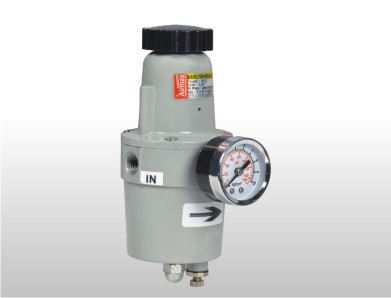A filter regulator is a device that is used to regulate the air pressure in a system. It is composed of two parts: a filter and a regulator. The filter removes contaminants from the air, while the regulator controls the air pressure.
There are many benefits to using a filter regulator. It can extend the life of your equipment, improve the quality of your product, and increase your productivity. Choosing the right filter regulator for your application is important. There are many factors to consider, such as the type of system you have, the environment you are using it in, and the specific needs of your application.
The filter regulator is a versatile and essential piece of equipment for many industries. It is important to understand how it works and what the benefits are before making a purchase.
Why use a Filter Regulator?
There are a few reasons why you might want to use a filter regulator. First, if you have an air compressor, you know that the air coming out of the compressor can be quite dirty. A filter regulator will help to remove some of the dirt and other contaminants from the air before it reaches your tools or other equipment. Second, a filter regulator can help to keep your air compressor from overloading by regulating the amount of air that flows through it. This can prolong the life of your compressor and save you money in the long run.
How does a Filter Regulator work?
A filter regulator is a device that is used to regulate the flow of air to protect sensitive equipment. It works by filtering out impurities and contaminants from the air and then regulating the pressure of the air so that it is suitable for use with the equipment.
The first part of a filter regulator is the filter, which is responsible for removing impurities from the air. The filter is usually made from a material such as paper or cloth and can be either disposable or reusable. The second part of a filter regulator is the regulator, which controls the pressure of the air. The regulator is usually adjustable so that it can be set to the correct pressure for the equipment being used.
A filter regulator is an essential piece of equipment for many different types of businesses and industries, as it helps to protect sensitive equipment from damage. It is also important for ensuring that equipment operates at its optimal level, as too much or too little pressure can cause problems.
What are the benefits of using a Filter Regulator?
There are many benefits to using a filter regulator in businesses and industries. One of the main benefits is that it helps to protect sensitive equipment from damage. This is because the regulator filters out impurities and contaminants from the air, and then regulates the pressure of the air so that it is suitable for use with the equipment. This means that the equipment is less likely to be damaged by high levels of pressure or contamination.
Another benefit of using a filter regulator is that it can help to improve the quality of air in an environment. This is because the regulator filters out impurities and contaminants, which can improve air quality. This can be especially beneficial in environments where there are a lot of people, as it can help to improve air quality for everyone in the area.
Finally, using a filter regulator can also help to save money. This is because it can help to prolong the life of equipment by protecting it from damage. Additionally, it can help to improve the quality of air, which can lead to fewer health problems and less need for expensive air purifiers.
How do I select the right Filter Regulator for my application?
When selecting a filter regulator, there are several key factors to consider to ensure that you choose the right one for your specific application. The first thing to consider is the flow rate of the air that you need to regulate. This will determine the size and type of filter regulator that you need. Another important factor to consider is the pressure of the air that you need to regulate. This will determine the size and type of regulator that you need. Finally, you need to consider the environment in which the filter regulator will be used. This includes factors such as temperature and humidity. By taking all of these factors into consideration, you can be sure to select the right filter regulator for your specific application.
What are the features of the filter Regulator?
A filter regulator typically has several features that are designed to help it regulate airflow and protect sensitive equipment. These features include a filter, a regulator, and a pressure gauge.
The filter is the part of the device that removes impurities and contaminants from the air. The regulator controls the pressure of the airflow, and the pressure gauge displays the pressure of the air so that it can be monitored.
These three components work together to ensure that the airflow is clean and regulated, and that sensitive equipment is protected from damage.
When choosing a filter regulator, it is important to consider the flow rate and pressure of the air that needs to be regulated, as well as the environment in which the filter regulator will be used. By taking all of these factors into consideration, you can be sure to select the right filter regulator for your specific application.
conclusion
There are many benefits to using a filter regulator, including protecting sensitive equipment from damage, improving air quality, and prolonging the life of the equipment. By taking all of these factors into consideration, you can be sure to select the right filter regulator for your specific application.

